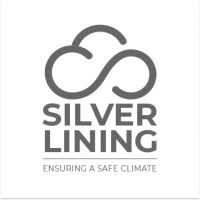 As you know, the new COVID-19 Omicron bivalent booster is now available. When is the best time to take this shot?
As you know, the new COVID-19 Omicron bivalent booster is now available. When is the best time to take this shot? - It depends. Read this article for details.
- For those who took their last booster six months ago, plan to soon travel, or otherwise happen to be vulnerable, like elders, AS SOON AS POSSIBLE.
- In my case, I'm old, have a long trip coming up beginning on November 12, and live in a seniors' community.
- Thus, 15 Craigside will arrange for these shots to be taken on our premises later this month.
- For me, that's perfect, especially if taken at least two weeks before departure, which will be the case.
- But all my four vaccinations were of the Moderna version. Should I stick to the same one, or expand to Pfizer?
- The CDC says it does not matter.
- Some studies of the earlier shots indicated that mixing vaccine brands actually may have produced a higher number of antibodies. Moderna's earlier monovalent vaccines were slightly more effective than Pfizer's, maybe because of the higher dosage. But it was not much different, and experts say either same or mixed should be fine, as long as you stick to Pfizer and Moderna.
- The side effects are the same.
- Pfizer's latest provides 15 micrograms, while Moderna's is 25 mg.
Nostalgia Tuesday sends me back to 5December2010 when I wrote on GEOENGINEERING OF CLIMATE CHANGE. I indicated that I had an article in The Huffington Post on 1July2008 (with a subtitle: How can you quickly reverse global warming? It has been hypothesized that reducing sunlight by only 1% should eliminate this problem, though some of the propositions to do so have been certifiably insane), and that in 1989 the Hawaii Natural Energy Institute hosted an international gathering on the subject. To quote:
Seed funds were provided by the University of Hawaii and the Environmental Protection Agency, and we hosted in Hawaii the First Greenhouse Warming Remediation Workshop in March of 1989. The group prepared a $3 million proposal for Year One, which hopefully was to begin in 1991. I went to see Robert Corell of the National Science Foundation, who had been a close colleague of mine when he was at the University of New Hampshire. As an ocean engineer, he was recently named to head the interagency committee on global climate change, a scientific organization. He was mentioned in the quest for the Blue Revolution. Corell’s frank recommendation was to forget remediation at this scale for ten years until the atmospheric and marine scientists had a better handle on the science.
Well, it has been 31 years (and this is closer to what he looks like today) since my meeting with Robert Corell, and finally, the U.S. government is beginning to spend a little money...very little. Republicans have historically opposed funding to do anything about climate change.
However, the present FY2023 budget has $44.9 billion in discretionary authority to tackle the climate crisis, which is $16.7 billion more than FY2021, an increase of 60%. So something is finally happening.
Let's see now, 1% of $45 billion is $450 million. How much are we spending on the planning for potential geoengineering solutions? According to the July 2022 issue of MIT Technology Review, the White House is finally beginning to develop a research plan to look at solar geoengineering. What is included?
- Planes or balloons to disperse tiny particles in the stratosphere to reflect back enough sunlight, mimicking the effect of massive volcanic eruptions in the past. The HuffPo article mentioned above indicated:
Surely enough, Mount Pinatubo in 1991 blew its top and threw 20 million tons of sulfur dioxide into the stratosphere and the globe cooled about a degree Fahrenheit that year. So the basic S-cubed concept has been largely verified by nature.
- Also looking at releasing certain particles to break up cirrus clouds, which trap heat, or make low-lying marine clouds more reflective.
- Geoengineering was long a taboo topic among scientists, and some argue it should remain one. There are questions about potential environmental side effects, and concerns that the impacts will be felt unevenly in different parts of the globe. It’s not clear how the world will grapple with tricky questions regarding global governance, including who should make decisions about whether to deploy such powerful tools and what global average temperatures we should aim for. Some feel that geoengineering is too dangerous to ever try or even to investigate, arguing that just talking about the possibility could make the need to address the underlying causes of climate change feel less urgent.
So how much is being spent? Well, the current federal staff is only PLANNING to do something. The National Academies of Sciences, Engineering and Medicine last year recommended a U.S. solar geoengineering research program of $30 million/year, not quite the $450 million/year advocated two decades ago.
The vacuum in funding inspired researchers to prod the really rich.
- Harvard got some funds from the Hewlett and Sloan Foundations, plus Bill Gates (I read his book, it was okay) and others. But public opinion prevented them from doing anything.
- SilverLining, with funds from the Pritzker Innovation Fund, the Moore Foundation, Grantham Foundation, various wealthy individuals, gave support to the University of Washington, Cornell and the Federal Government.
The bottom line is that the worry Bob Corell had in 1991 still holds sway. The current thinking remains anti-geoengineering for fear of monumental failure. It will take something more calamitous than this vague sense of sea level rise, slightly warmer weather and a few minor species going extinct for anything effective to happen.
-












Comments
Post a Comment